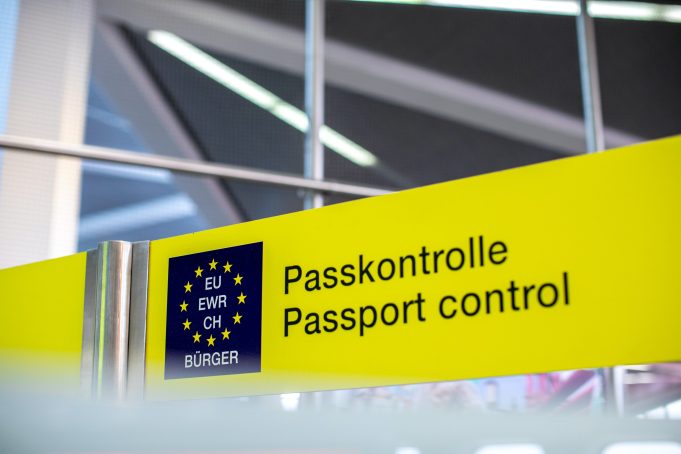The UK is still trying to pick itself back up from the economic effects of the COVID-19 pandemic. As a matter of fact, the nation’s economy has grown by 7.5% in 2021. Factoring this along with the restrictions being lifted, means that the population and businesses can plan out their future free from lockdown restrains.
So how does this affect immigration law? Here, we will explore what the UK immigration landscape will look like throughout 2022 and how this may influence employers’ decisions.
How have Right to Work checks changed?
In recent months, the government has introduced changes to the Right to Work check. As of 6 April 2022, employers must check an employee’s eligibility to work through the Home Office online check, rather than accepting physical cards. This will apply when presented with Biometric Residence Permits (‘BRPs’), Biometric Residence Cards (‘BRCs’), or Frontier Worker Permits ‘FWPs’.
BPRs have been the main form of Right to Work checks since July 2015. These documents granted non-EEA citizens and their dependents the right to remain in the UK for more than six months. Prior to this, individuals were issued with stamps, known as vignettes, in their passports. Since 16 May 2014, for those people in the UK who require permission to work and reside with a vignette, this endorsement must be in a current passport to demonstrate a right to work.
Employers will also be able to use certified Identification Document Validation Technology (‘IDVT’). This service carries out digital eligibility checks on behalf of British and Irish individuals, instead of only using the manual document-based check. Current practice is that British and Irish nationals need to show copies of their passports as part of their right to work check. With the Home Office keen to enable employers to use digital means to confirm employees’ right to work, legislation has been brought in to enable this to occur from 6 April 2022.
The aim is to: “assure prospective employees’ identities and eligibility, using consistent and more secure methods, reducing risk and allowing them to recruit in a safer way. Enabling the use of IDVT for Right to Work and DBS checks will help to support long-term post-pandemic working practices, accelerate the recruitment and onboarding process, improve employee mobility and enhance the security and integrity of the checks.”
If you’re looking for a list of the certified providers, the Home Office will publish one here in due course.
Has the number of businesses accepting sponsor licences risen?
The Home Office issues sponsor licences to businesses that would like to sponsor international workers (see here for more information). In recent years, the number of licence holders has risen significantly. In fact, according to Home Office data, there were 38,812 Skilled Worker (formerly Tier 2) sponsored licence holders as of Q4 2021. This is the highest number of licence holders since the scheme started in 2014. Despite the pandemic and Brexit causing economic uncertainty, in the last year alone, there has been an average of 3.61% growth in sponsor licence holders, equating to over 1000 new licence holders per quarter.
This data, coupled with the lowering of the skill level for foreign nationals wishing to work in the UK in 2021, means the trend of companies obtaining sponsor licences and the numbers of skilled foreign nationals being sponsored will continue to grow.
There are certain sectors that were reliant upon EU nationals, such as healthcare and hospitality. It is likely that these sectors will receive the highest number of Skilled Worker visas. You can read here about how the Home Office has relaxed the rules for some in the health and care sector.
How has the conflict in Ukraine influenced temporary immigration concessions?
On 17 February 2022, due to the conflict within Ukraine, the Home Office published temporary concessions for Ukrainian nationals. Now, they are able to switch between family visas to points-based system visas, such as Skilled Worker visas. This applies to British nationals and their family members living in Ukraine, as well as Ukrainian nationals currently in the UK.
Seasonal and temporary workers, such as HGV drivers, are also being given permission to extend their stay until 31 December 2022. The Home Office will directly contact employers and Scheme Operators about this. With the situation ever evolving, the Home Office’s concessions will likely be updated. Please refer here for up-to-date information.
What are the new visa categories?
The Home Office is introducing three new visa categories. The details are brief, but this is what we currently know:
- First is the Global Business Mobility Visa. This will make it easier for existing overseas businesses to send personnel to the UK, whether they already have a UK presence or not. The plan is to bring together the Intra-Company Transfers and Overseas Sole Representatives under one visa category. As a result, this might make it easier for firms to come to the UK with a team as opposed to either an individual (such as is currently the case under the Overseas Sole Representative route) or already have established themselves in the UK.
- Next is the Scale-Up visa. The visa, which will enable some of the UK’s fastest-growing businesses to access overseas talent, will be open to applicants who pass the language proficiency requirement and have a high-skilled job offer from an eligible business with a salary of at least £33,000. Unlike previous visas, this may not require a sponsor licence issued by the Home Office. This is a potentially big move for skilled foreign nationals looking to make the UK their home and sponsors hiring more skilled workers, especially considering the costs involved with obtaining a licence and sponsoring an individual and the Home Office waiting times, which at the moment over 80% of cases are taking over four weeks to be considered.
- Last is the High Potential Individual visa. This will apply to individuals who have graduated from some of the top global universities, who are skilled within their profession and will not require any sponsorship. No job offer requirement or any other requirement to have a sponsor is a big deal. The only route that offers something similar at the moment are the Exceptional Promise/Exceptional Talent visas, but these are limited and the requirements are far more stringent.
These mooted changes are welcome to ensure that, post-Brexit, the UK remains one of the top destinations for global talent and businesses to set up. Current immigration categories like the Global Talent route are under-utilised due to their high thresholds, drafted when the UK was still a member of the EU and had a significantly larger labour pool to choose from unhindered by restrictive visa requirements. Further detail is expected soon on these categories.
On a final note
Throughout 2022, businesses around the nation will begin to recover from the economic effects of the pandemic and make plans to renew in an economy of “high wage, high skill”. This will help the economy recover from labour shortages due to the “great resignation”. The significant increase in applications for sponsor licences and the new mooted visa categories are no surprise post-Brexit, especially with some sectors that were heavily reliant upon EU nationals.
Therefore, the Home Office must continue to efficiently remedy current delays within various visa processes. It is anticipated, also, that closer trade links with countries such as India and China (subject to the political situation with Hong Kong) will likely lead to more intense conversations on immigration solutions to ease the passage of trade.










